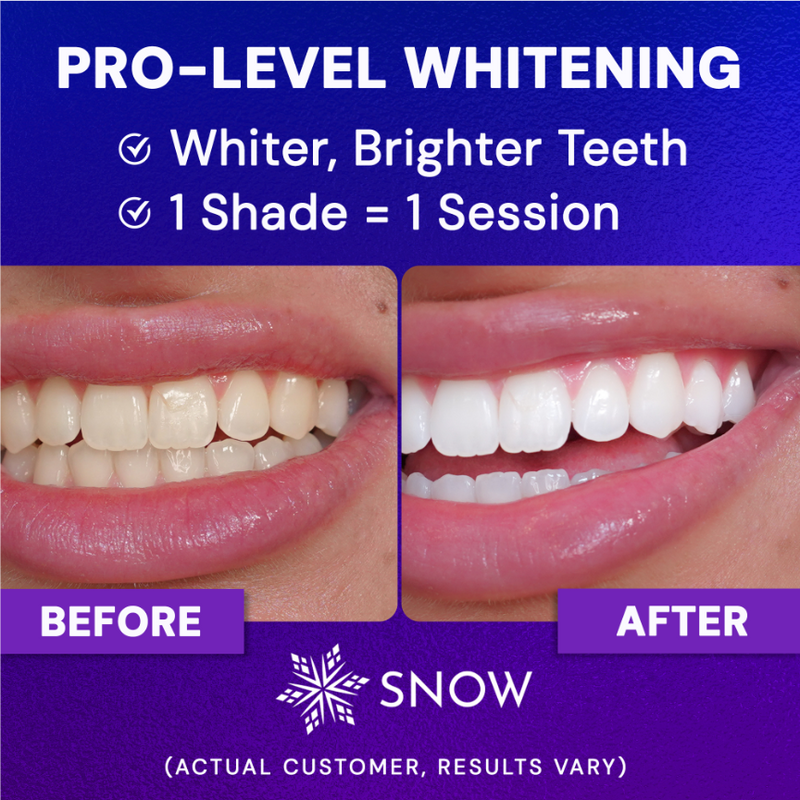Dental plaque affects everyone. When germs combine with sweet and starch-based meals, a film forms on the teeth and in the gum line. Dental plaque is then removed from the teeth with brushing and flossing. When you do not remove the plaque, it mineralizes and hardens, and turns into tartar that only a dental professional can remove.
Gingivitis, cavities, and even losing teeth can all happen because of plaque. Regular dental checkups help you effectively remove plaque and prevent tartar build-up that can lead to periodontal disease through good oral hygiene.
Since dental plaque is hard to see, the National Institute of Dental and Craniofacial Research recommends your oral health routine include brushing daily, flossing, eating healthy, and limiting sugary foods.
WHAT IS DENTAL PLAQUE?
Have you wondered what plaque build-up on your teeth is? Dental plaque is a soft, sticky film that forms on your tooth enamel, leading to tartar build-up when you don’t remove it with daily cleaning. It is also known as tooth plaque, dental biofilm, and microbial plaque.
Plaque is a pale yellow biofilm deposit that builds on your teeth regularly when food, saliva, and fluids mix, bacteria deposits form and gather where the teeth join the gums. Plaque includes bacteria that release harmful acids that affect the enamel of your teeth and can harm your gums.
If the plaque build-up is not addressed, it may become firmly attached and damage tooth enamel. It includes countless bacteria that feed on your food and beverages leftover in your mouth you consume daily. If you do not remove plaque regularly and deposits on teeth are not eliminated, they can cause gum disease, tooth decay, and tartar formation.
WHAT CAUSES DENTAL PLAQUE BUILDUP?
Plaque forms when bacteria in your mouth combine with sugary and starchy foods, such as bread and pasta, juice, milk, soft drinks, potato chips, and fruit. This bacteria generates acids that break down carbohydrates found in food and drinks. If you do not clean your teeth quickly after eating or drinking, acids, bacteria, and carbohydrates can mix to produce a sticky, white covering as plaque builds.
WHAT ARE THE SIGNS OF DENTAL PLAQUE?
The most apparent indicator of plaque is that you can feel it on the teeth. Other indications are:
- Bad breath that persists (halitosis).
- Gums that are swollen, red and sensitive after brushing.
If you have any of the most common symptoms of plaque formation, you may want to take a trip to your dentist's office and have a dental professional or analyze your oral health. A dental hygienist may need to clean your teeth at this point.
WHAT ARE THE PROBLEMS CAUSED BY DENTAL PLAQUE?
Plaque can become tartar if you do not make an effort to brush and floss daily. Only a dentist can remove tartar properly. Tartar and plaque can cause:
- Cavities
- Periodontal disease and gingivitis
- Serious gum infection
- Tooth deterioration and you may lose teeth
- Abscesses of the teeth
WHAT EFFECT DOES TARTAR HAVE ON TOOTH ENAMEL AND GUMS?
Tartar might make it difficult to brush and floss as thoroughly as you should. Dental cavities and tooth decay can result from this.
When you have tarter form above your gums it is unhealthy because of the germs causing irritation and damage to your gums. This might eventually lead to hardened plaque and degenerative gum disease.
Gingivitis is the first stage of gum disease and is characterized by bleeding. Brushing, flossing, using an antiseptic mouthwash, and visiting your dental hygenist regularly are the best ways to prevent plaque build-up.
Otherwise, these areas may deteriorate as inflammatory spots form between the gums and teeth and get infected with germs. Your body sends chemicals to fight back, which combine with bacteria and other substances. The mineralized plaque becomes dental calculus that can further harm the gums and jaw that support your teeth. This is known as periodontitis. Furthermore, The American Dental Association has reported links between bacteria in gum disease to heart disease and other health issues.
PREVENTING PLAQUE AND TARTAR BUILDUP
The most straightforward strategy to avoid tartar is to maintain good oral health and prevent plaque accumulation on teeth. Brush your teeth and use a fluoride mouthwash to help prevent inflammation and protect the teeth. Preferably, use a fluoride toothpaste that controls tarter, and floss once a day. Also, make frequent visits to your dentist for oral examinations and cleanings.
- Every six months, go to the dentist. Adults who visit their dentist regularly are less likely to suffer from plaque-related dental disorders.
- Floss once a day to eliminate food particles and plaque between your teeth.
- Get electric toothbrushes and replace the head every three months.
- To lower the risk of increasing plaque and tartar, avoid smoking.
HOW TO REMOVE TARTAR AT HOME NATURALLY
There are several natural methods for reducing plaque build-up, which can contribute to tartar formation, and most of them require the use of products you most likely already have at home. Just a word of caution: while these natural cures benefit your teeth, they don't taste very good!
BAKING POWDER
Baking soda may whiten your teeth while also neutralizing cavity-causing acid. Baking soda is used in certain kinds of toothpaste as a mild abrasive to eliminate plaque from teeth. Mix a few drops of water with half a teaspoon of baking soda to make a paste. Apply the paste to your toothbrush and brush your teeth gently for one minute, then rinse well with water.
ALOE VERA GEL
Aloe vera is a little shrub with several health advantages, including benefits to your teeth. Mix a teaspoon of aloe vera, four tsp of glycerine (a common component in toothpaste), five tbsp of baking soda, a drop of lemon essential oil, and one cup of water. Once combined, use the combination to eliminate plaque and tartar.
TARTAR PREVENTION TIPS
Your best strategy for oral health is to avoid allowing tartar to build on your teeth. Here's how it's done:
BRUSH TWICE A DAY FOR 2 MINUTES
A few seconds of brushing twice daily will not remove plaque or prevent tartar formation. Use a tiny brush with delicate bristles that fits well into your mouth. Pay special attention to the difficult-to-reach surfaces behind your teeth and on your molars.
USE AN ELECTRIC TOOTHBRUSH
Electronic toothbrushes may remove plaque more efficiently than manual versions. Whatever type you choose, be sure it is approved by the American Dental Association. These have passed strict quality control and safety checks.
CHOOSE THE RIGHT TOOTHPASTE
Choose fluoride-based tartar-control toothpaste. Fluoride will help in restoring enamel damage. Some products contain triclosan, a chemical that kills bacteria in plaque.
NEVER SKIP FLOSSING
Floss, floss, and more floss. Dental floss is the only method to remove plaque between your teeth and keep tartar out of these difficult-to-reach areas, regardless of how great your toothbrush is.
RINSE AT LEAST ONCE A DAY
To help destroy germs that produce plaque, use an antiseptic mouthwash regularly.
MAINTAIN A HEALTHY DIET
Sugary and starchy meals provide an environment for germs in your mouth. They produce acids when exposed to such foods. Eat a nutritious diet and restrict your intake of sugary foods. When you eat, you are feeding the germs in your mouth. You don't have to give up sweets or snacks entirely. Just be aware of how frequently you indulge. Brush your teeth and drink plenty of water before and after meals. Try to replace junk food with more healthy foods.
YOU SHOULD NOT SMOKE
Tartar is more prevalent among people who smoke cigarettes or use other tobacco products.
Frequently Asked Questions
Does tartar on the teeth go away?
Tartar can be removed with frequent dental cleanings and brushing and flossing daily. However, the tartar can return if plaque builds up again or you do not maintain dental hygiene. It's hard for an individual to remove tartar on their own since they don't have the proper tools or techniques.
What creates tartar on teeth?
Plaque is a sticky, white coating containing germs that accumulates on the tooth surfaces over time. If not removed, plaque reacts to the minerals in the saliva and hardens to tartar, which a dental expert can only remove.
Is it painful to remove tartar?
Tartar removal may or may not be painful, depending on various variables. Removing tartar might be uncomfortable if you have sensitive teeth or conditions like gingivitis or periodontitis.
What color is tartar on teeth?
When plaque accumulates on teeth and is not adequately cleaned, it hardens into tartar. Tartar above the gum line appears yellowish at first, but if left untreated, it will turn green, brown, or black.
SUMMARY
Plaque and tartar build-up on teeth can cause gum disease, enamel loss, and tooth decay.
Poor oral hygiene may also contribute to the development of various health problems.
Brushing twice daily with fluoride toothpaste and flossing once daily can help eliminate plaque and prevent tartar from developing on teeth.
Brushing your teeth with baking soda toothpaste and flossing with a water flosser are two more home treatments that might help reduce plaque accumulation.
Another essential step in maintaining proper dental hygiene is regularly visiting a dentist for exams and cleanings.
A dentist may also prescribe prescription-strength mouthwash or adjustments to an oral care regimen for patients with extensive plaque or severe gum disease.









































































